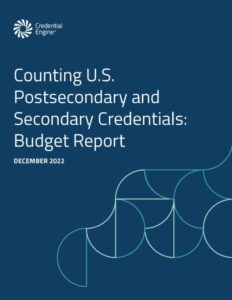
This is the second report issued by Credential Engine to estimate U.S. spending on training and education. This 2022 report updates the total expenditures by educational institutions, employers, federal grant programs, states, and the military to $2.133 trillion.
- Educational institutions spent $1.430 trillion on educational activities, approximately 67 percent of total spending in the U.S.
- Employers spent $594 billion (roughly 28 percent of the total) on training and training wages.
- States and federal grants to other schools, programs, and the military account for the remaining $109 billion, about 5 percent of the total.
All this spending is oriented toward ensuring that individuals being served by education and training opportunities earn the credentials and competencies that have value to them in some way. Given that these expenditures are significant for all involved—not to mention the millions of learners incurring debt—we should all be working toward a system that allows us to make the best use of these resources. The upcoming report, 2022 Counting U.S. Postsecondary and Secondary Credentials, counts 1,076,358 unique credentials in the U.S. alone. Credential transparency can help align efforts across education and training to provide more efficient and practical pathways to and through these education and training opportunities

